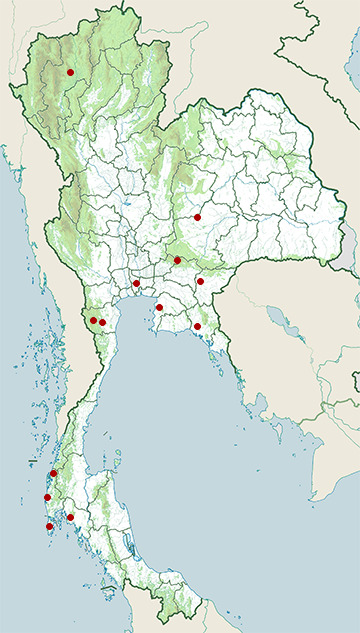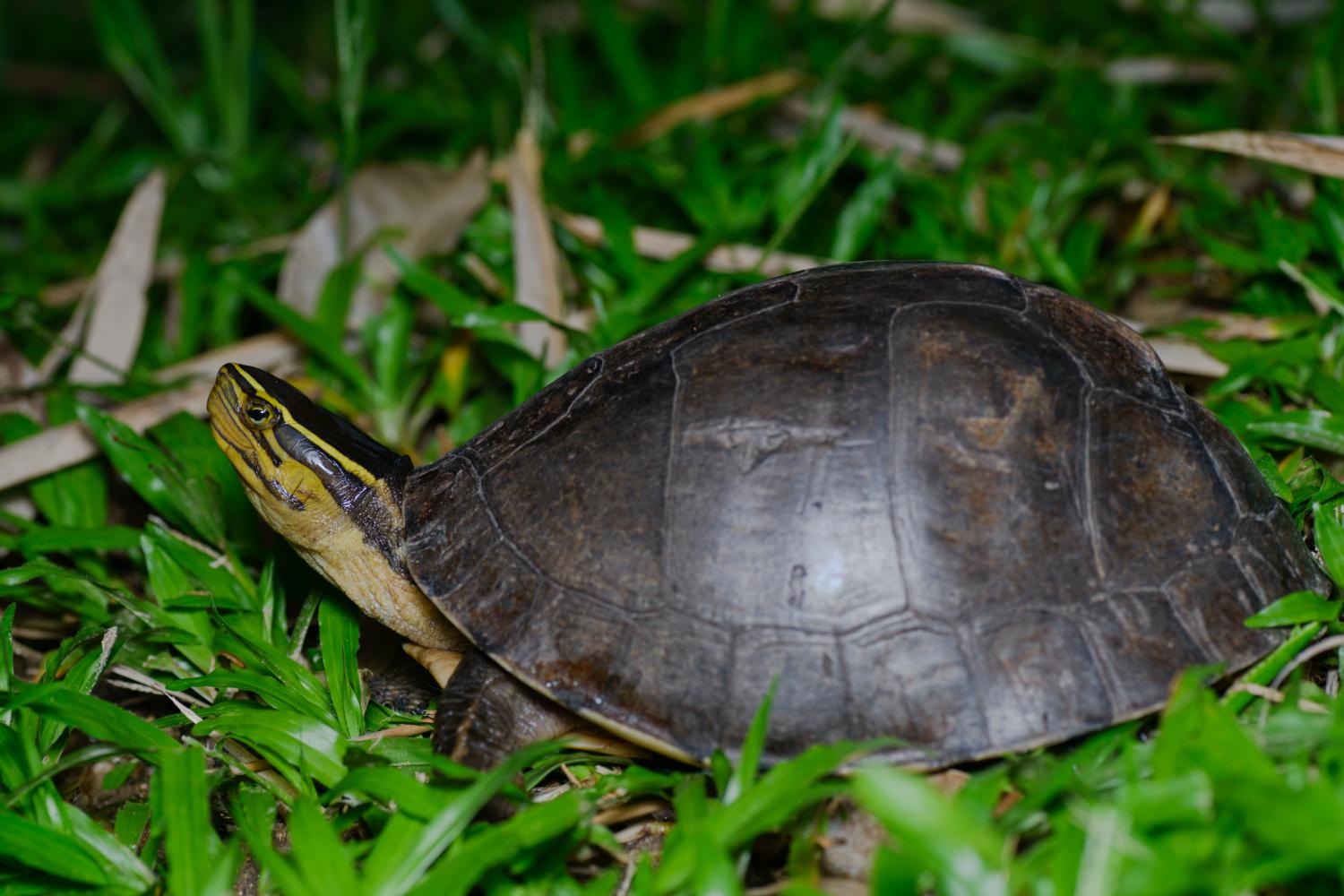West Indonesian box turtle
Cuora couro
(August Friedrich Schweigger, 1812)
In Thai: เต่าหับ, dtao haab
* No content available for this species yet *
Scientific classification
- Kingdom
- Animalia
- Phylum
- Chordata
- Class
- Reptilia
- Order
- Testudines
- Family
- Geoemydidae
- Genus
- Cuora
- Species
- Cuora couro
Synonyms
- Cuora amboinensis couro, Nguyen Van Sang et al. (2009)
- Cuora amboinensis, Ulrich Manthey & Wolfgang Grossmann (1997)
- Cuora amboinensis cuoro, Indraneil Das (1995)
- Cuora amboinensis couro, H. J. Rummler & Uwe Fritz (1991)
- Cuora amboiensis, Wirot Nutaphand (1979)
- Cuora ambionensis, Goldsmith, Proctor, Cole & Dadd (1969)
- Emys cuoro, Robert Mertens & Heinz Wermuth (1955)
- Cyclemys amboinensis, Robert Mertens (1930)
- Cistudo amboinensis, George Albert Boulenger (1889)
- Cyclemys amboinensis, George Albert Boulenger (1889)
- Cuora amboinensis, John Edward Gray (1856)
- Cistudo amboinensis, André Marie Constant Duméril & Gabriel Bibron (1854)
- Clemmys (Clemmys) melanocephala, Leopold Fitzinger (1835)
- Cistudo amboinensis, André Marie Constant Duméril & Gabriel Bibron (1835)
- Emys couro, John Edward Gray in Edward Griffith (1831)
- Cistuda amboinensis, John Edward Gray (1830)
- Terrapene couro, Leopold Fitzinger (1826)
- Kinosternon amboinense, Thomas Bell (1825)
- Terrapene bicolor, Thomas Bell (1825)
- Terrapene amboinensis, Blasius Merrem (1820)
- Emys couro, August Friedrich Schweigger (1812)
- Emys melanocephala, August Friedrich Schweigger (1812)
- Emys amboinensis, August Friedrich Schweigger (1812)
- Emys cuoro, August Friedrich Schweigger (1812)
- Cuora amboinensis couro, August Friedrich Schweigger (1812)
- Testudo melanocephala, François Marie Daudin (1802)
- Testudo amboinensis, François Marie Daudin (1802)
- Testudo melanocephala, François Marie Daudin (1801)
- Testudo amboinensis, Riche in Daudin (1801)
- Testudo fasciata, Georg Adolf Suckow (1798)
Photos
Please help us review our species pages if wrong photos are used or any other details in the page is wrong. We can be reached via our contact us page.
Cuora couro
Range Map

- Bangkok Province
- Doi Suthep - Pui National Park
- Kaeng Krachan District, Phetchaburi
- Kaeng Krachan National Park
- Khao Lak - Lam Ru National Park
- Khao Yai National Park
- Khura Buri District, Phang Nga
- Mueang Krabi District, Krabi
- Mueang Sa Kaeo District, Sa Kaeo
- Phra Thong Kham District, Nakhon Ratchasima
- Phuket Province
- Si Racha District, Chonburi
- Tha Mai District, Chanthaburi
Range map of Cuora couro in Thailand

